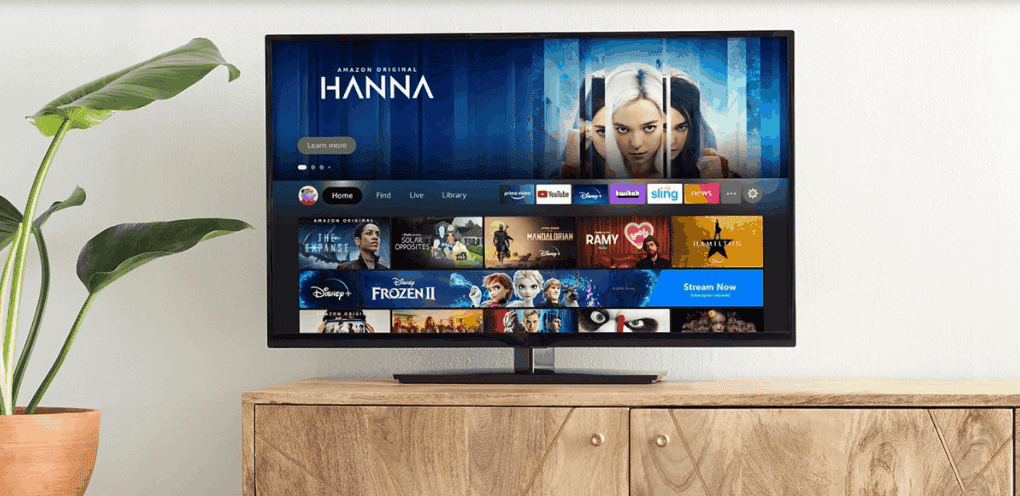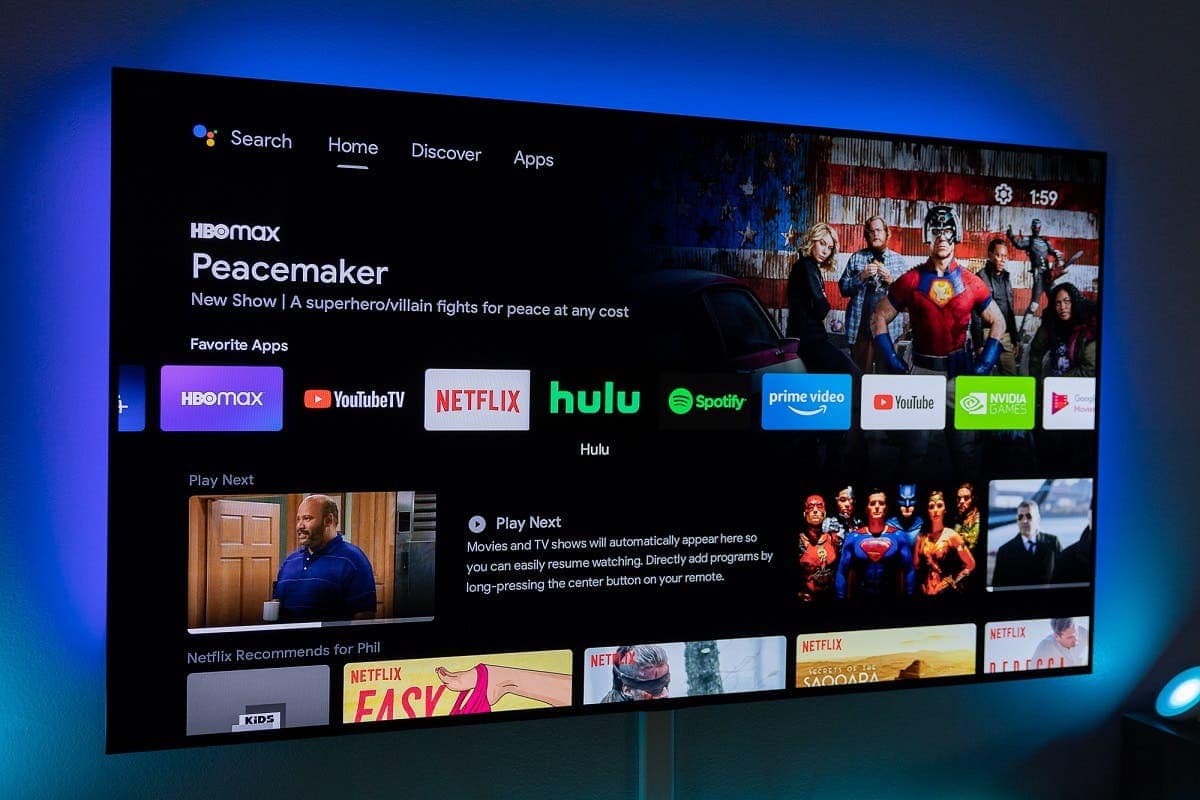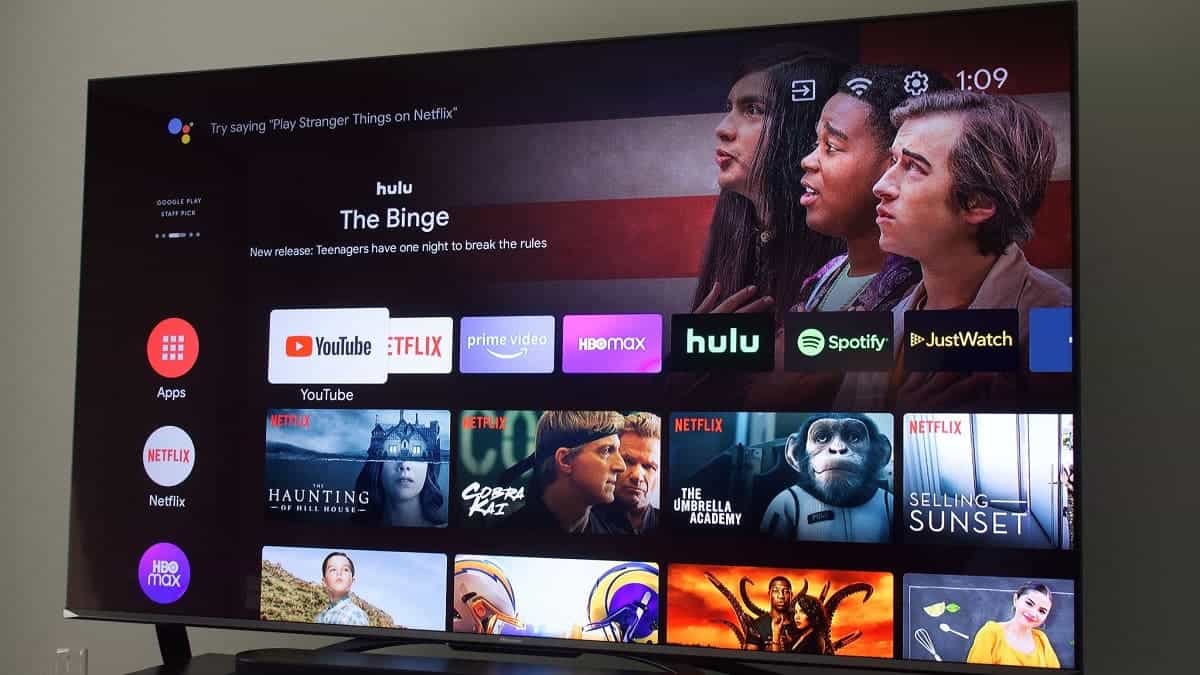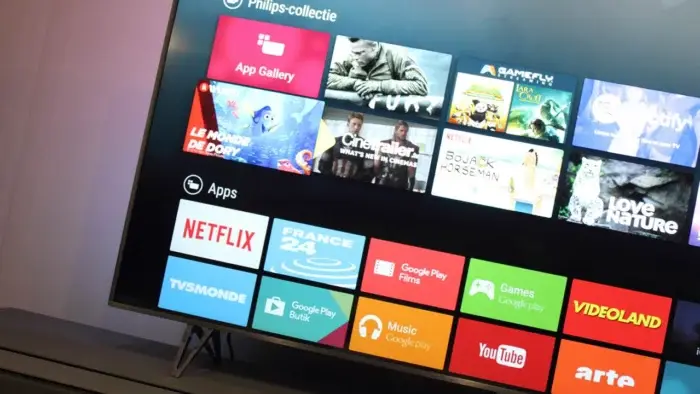In the age of streaming giants and cord-cutting, smart TVs have become the centerpiece of many living rooms. But with countless options available, choosing the right one can feel like navigating a maze. This comprehensive guide will equip you with the knowledge needed to make an informed decision, considering various aspects like operating systems, screen technologies, features, and more.
Navigating the Smart TV Maze: A Comprehensive Guide to Choosing the Right One

Operating Systems: The Brain of Your Smart TV
The operating system (OS) is the software platform powering your smart TV, influencing user experience and app compatibility. Here’s a breakdown of the leading contenders:
- Android TV: This widely used, open-source platform offers a familiar interface for Android users, boasts extensive app compatibility including popular services like Netflix, YouTube, and Disney+, and allows for customization through downloadable apps. However, the interface can vary depending on the manufacturer, and updates might not be as frequent on all models.
- LG webOS: Recognized for its user-friendly interface with a card-based layout and intuitive navigation, LG webOS provides smooth performance and supports major streaming apps. It also integrates well with LG’s smart home ecosystem for seamless connectivity.
- Samsung Tizen: This proprietary OS found on Samsung TVs offers a clean and responsive interface with quick access to frequently used features. While it has a good selection of streaming apps, it might not be as open as Android TV in terms of app availability. Additionally, updates might not be available across the entire TV range.
- Roku TV: Primarily known for its streaming devices, Roku TV offers a simple and familiar user experience with a focus on streaming content. It boasts excellent app compatibility, including lesser-known services, and integrates well with other Roku devices. However, customization options might be limited compared to other platforms.
Beyond the OS: Unveiling the Display’s Secrets
The screen technology plays a crucial role in picture quality, viewing angles, and energy efficiency. Here’s a closer look at the main contenders:
- LED (Light-Emitting Diode): The most common and affordable option, LED TVs use backlighting with LEDs to illuminate the LCD panel. They offer decent picture quality, good brightness, and are energy-efficient. However, viewing angles can be limited compared to other technologies.
- OLED (Organic Light-Emitting Diode): Offering superior picture quality, OLED TVs produce deep blacks, vibrant colors, and wide viewing angles due to self-illuminating pixels. They are also considered thinner and lighter. However, OLED TVs can be significantly more expensive than LED options and may be susceptible to image burn-in if used for displaying static content for extended periods.
- QLED (Quantum dot Light-Emitting Diode): Developed by Samsung, QLED TVs utilize a combination of LED backlighting and quantum dots, a layer of microscopic particles that enhance color and brightness. They offer better color accuracy and wider viewing angles compared to standard LED TVs while being potentially more affordable than OLED alternatives. However, QLED TVs might not match the perfect blacks and deep contrasts achievable with OLED technology.
Additional Factors to Consider:
- Resolution: This refers to the number of pixels displayed on the screen, impacting picture sharpness and detail. While 1080p (Full HD) remains standard for smaller TVs, 4K (Ultra HD) is increasingly preferred for larger screens and delivers sharper visuals. 8K TVs offer even higher resolution but are still relatively new and lack content availability.
- Refresh Rate: Measured in Hz (Hertz), refresh rate indicates how many times per second the image on the screen is refreshed. A higher refresh rate (e.g., 120Hz) offers smoother motion handling, particularly beneficial for fast-paced content like sports and gaming.
- HDR (High Dynamic Range): This technology improves picture quality by providing a wider range of colors and contrast. HDR content showcases more detail in both bright and dark areas. However, not all TVs and content support HDR, and there are different HDR formats (e.g., HDR10, Dolby Vision) to consider.
- Size and Viewing Distance: Matching the TV size to your viewing distance is crucial for an optimal viewing experience. Generally, larger screens require a greater viewing distance to avoid feeling overwhelmed. Consider the recommended viewing distance for the specific TV size you’re interested in.
- Smart Features: While most smart TVs offer popular streaming app access, some may have additional features like voice control compatibility with virtual assistants (e.g., Google Assistant, Amazon Alexa), built-in tuners for watching over-the-air channels, and gaming features (e.g., low input lag for faster response time). Consider which features are important to you.
- Brand and Warranty: Reputable brands often offer better quality control, customer support, and longer warranties. Consider factors like brand reputation and warranty coverage when making your selection.
Beyond Technical Specs: Making a Well-Informed Choice
While technical specifications are essential, there are additional factors to consider for a well-rounded purchase decision:
- Budget: Smart TVs come in a wide range of prices. Determine your budget beforehand to narrow down your options and avoid exceeding your financial limitations.
- Content Consumption: Reflect on how you plan to use the TV. If primarily for streaming, prioritize app compatibility and platform support for your preferred services. Gamers might prioritize features like high refresh rate and low input lag, while movie enthusiasts might value superior picture quality and HDR support.
- Read Reviews and Watch Comparisons: Utilize online resources and expert reviews to gain insights into real-world user experiences and performance comparisons. Watching comparison videos can help visualize the differences in picture quality and features between various models.
- Future-Proofing: Consider future needs and potential upgrades. If you plan to connect gaming consoles or other devices, ensure sufficient HDMI ports. If you anticipate future technology advancements, opting for a TV with the latest features might be worthwhile.
- Visit a Showroom (Optional): While online shopping offers convenience, physically visiting a showroom allows you to experience the TV firsthand. Assess factors like screen size, picture quality, and user interface in a real-world setting.
Making the Final Decision:
Once you’ve considered all the essential factors, compare your shortlisted options based on your priorities and budget. Remember, the “best” smart TV is subjective and depends on your individual needs and preferences. Don’t hesitate to prioritize features most important to you, even if it means sacrificing others.
Additional Tips:
- Beware of marketing jargon: Don’t solely rely on marketing terms like “4K Ultra HD” or “HDR” to make your decision. Understand the underlying technologies and their real-world impact on picture quality.
- Don’t be afraid to negotiate: Prices can be slightly flexible, especially when purchasing from brick-and-mortar stores. Consider negotiating for a better deal, especially if you’re buying additional accessories like soundbars.
- Consider extended warranties: While not always necessary, extended warranties can provide peace of mind against potential future malfunctions. However, weigh the cost of the warranty against the potential repair costs and the TV’s overall quality.
By following this comprehensive guide and making informed decisions, you’ll be well-equipped to choose the perfect smart TV that enhances your home entertainment experience for years to come.

Advanced Considerations for the Tech-Savvy User:
This section delves deeper into technical aspects for users who want a more nuanced understanding of their smart TV options:
Gizchina News of the week
1. Panel Technology:
Beyond LED, OLED, and QLED, additional panel technologies offer further refinement:
- Mini-LED: This emerging technology utilizes smaller LEDs in the backlight, allowing for more precise control and potentially better contrast levels compared to standard LED TVs. However, Mini-LED TVs are still relatively new and expensive.
- MicroLED: This cutting-edge technology uses microscopic LEDs for individual pixel control, offering unmatched picture quality, contrast, and viewing angles. However, MicroLED TVs are currently in their infancy, extremely expensive, and not widely available to consumers.
2. Processing Power:
The processor plays a crucial role in various aspects of the TV’s performance, including picture upscaling, motion handling, and overall responsiveness. Look for TVs with powerful processors, especially if you value features like smooth motion in fast-paced content or prefer playing games on your TV.
3. Connectivity Options:
Modern smart TVs offer various connectivity options. Apart from standard HDMI ports, consider features like:
- USB ports: These allow connecting external storage devices for watching movies or playing media files directly on the TV.
- Wireless connectivity: Look for options like Wi-Fi and Bluetooth for convenient internet access and connection to external devices like wireless headphones or smartphones.
- Ethernet port: While Wi-Fi is prevalent, a wired ethernet connection can offer a more stable and faster internet connection for streaming and online gaming.
4. Smart Home Integration:
If you have a smart home ecosystem, consider a TV that integrates seamlessly with it. Look for TVs compatible with platforms like Google Home or Amazon Alexa for voice control and smart device interaction through the TV.
5. Calibration:
While most TVs come pre-calibrated, achieving optimal picture quality often requires further adjustments. Consider purchasing a calibration tool or service to unlock the full potential of your TV’s picture performance.
Remember, this information equips you for in-depth research. Prioritize features that best suit your needs and usage habits. Ultimately, a well-informed decision based on your individual preferences will ensure you choose the perfect smart TV to elevate your home entertainment experience.
Emerging Trends and the Future of Smart TVs:
As technology continues to evolve, the landscape of smart TVs is constantly changing. Here’s a glimpse into some exciting emerging trends:
-
AI-powered features: Expect artificial intelligence (AI) to play a bigger role in future smart TVs, offering features like:
- Personalized recommendations: AI can analyze your viewing habits and suggest content tailored to your preferences.
- Content upscaling: AI can enhance the quality of lower-resolution content to approach the detail and sharpness of higher resolutions.
- Adaptive picture and sound: AI can automatically adjust picture and sound settings based on the type of content being displayed (e.g., sports, movies, music) for an optimized viewing experience.
-
Cloud gaming: The rise of cloud gaming services like Google Stadia and Microsoft xCloud could see TVs playing a bigger role in gaming, potentially eliminating the need for dedicated gaming consoles. These services stream games directly to the TV, requiring a strong internet connection and a compatible controller.
-
Foldable and rollable displays: While still in their initial stages, foldable and rollable display technologies have the potential to revolutionize TV design. Imagine a TV that can be folded and stored away when not in use or a screen that can be rolled out from a compact housing.
-
Immersive viewing experiences: Technologies like 8K resolution, HDR advancements, and wider color gamuts are pushing the boundaries of picture quality, aiming to create an increasingly immersive viewing experience that rivals the cinema.
Choosing the right smart TV can be a daunting task, but with the knowledge acquired through this comprehensive guide, you’re well-equipped to navigate the maze of options and make an informed decision. Remember, the “best” smart TV is subjective and depends on your individual needs and priorities. Consider your budget, viewing habits, and desired features, and don’t hesitate to leverage online resources and expert opinions to ensure you choose the perfect TV to enhance your home entertainment experience for years to come. As the technology landscape continues to evolve, be sure to stay informed about emerging trends to stay ahead of the curve and embrace the exciting future of smart TVs.

Tips and Tricks for Choosing the Perfect Smart TV:
Pre-Purchase:
- Set a realistic budget: Determine your spending limit before embarking on your search. This will help you narrow down options and avoid exceeding financial constraints.
- Identify your priorities: Reflect on how you plan to use the TV. Prioritize features that align with your needs. For example, gamers might prioritize high refresh rates and low input lag, while movie enthusiasts might value superior picture quality and HDR support.
- Research and compare: Leverage online resources and expert reviews to compare different TV models and understand their strengths and weaknesses. Consider creating a shortlist of potential options based on your needs and budget.
- Utilize online tools: Websites like rtings.com provide in-depth TV reviews and comparisons, allowing you to compare features, picture quality, and performance across different models.
- Consider future needs: If you plan to connect gaming consoles or other devices, ensure sufficient HDMI ports and future-proof features to accommodate potential upgrades.
During Purchase:
- Don’t be afraid to negotiate: Prices can be slightly flexible, especially in brick-and-mortar stores. Try negotiating for a better deal, especially if you’re buying additional accessories like soundbars.
- Beware of extended warranties: While offering peace of mind, weigh the cost against potential repair expenses and the overall TV quality. Consider self-insurance or manufacturer warranties instead.
- Utilize in-store demos (optional): If visiting a showroom, take advantage of in-store demonstrations to experience the TV firsthand. Assess factors like screen size, picture quality, and user interface in a real-world setting.
Post-Purchase:
- Calibrate your TV: While most TVs come pre-calibrated, achieving optimal picture quality often requires further adjustments. Consider using calibration tools or services to unlock the full potential of your TV.
- Explore smart features: Explore the built-in smart features and available apps. Consider downloading streaming services you subscribe to, exploring voice control options, and connecting to other smart home devices for a seamless and personalized experience.
- Keep your TV updated: Ensure your TV’s software is up-to-date to access the latest features, bug fixes, and security patches. Most TVs offer automatic updates, but it’s worth checking manually occasionally.
- Invest in external components (optional): Consider investing in additional accessories if necessary. For example, a soundbar can significantly enhance the sound quality of your TV, while a streaming device might offer more app options or smoother performance compared to the built-in platform.
By following these tips and tricks, you can navigate the smart TV selection process with confidence, making an informed decision that aligns with your needs and budget. Remember, a well-chosen smart TV can elevate your home entertainment experience for years to come.





